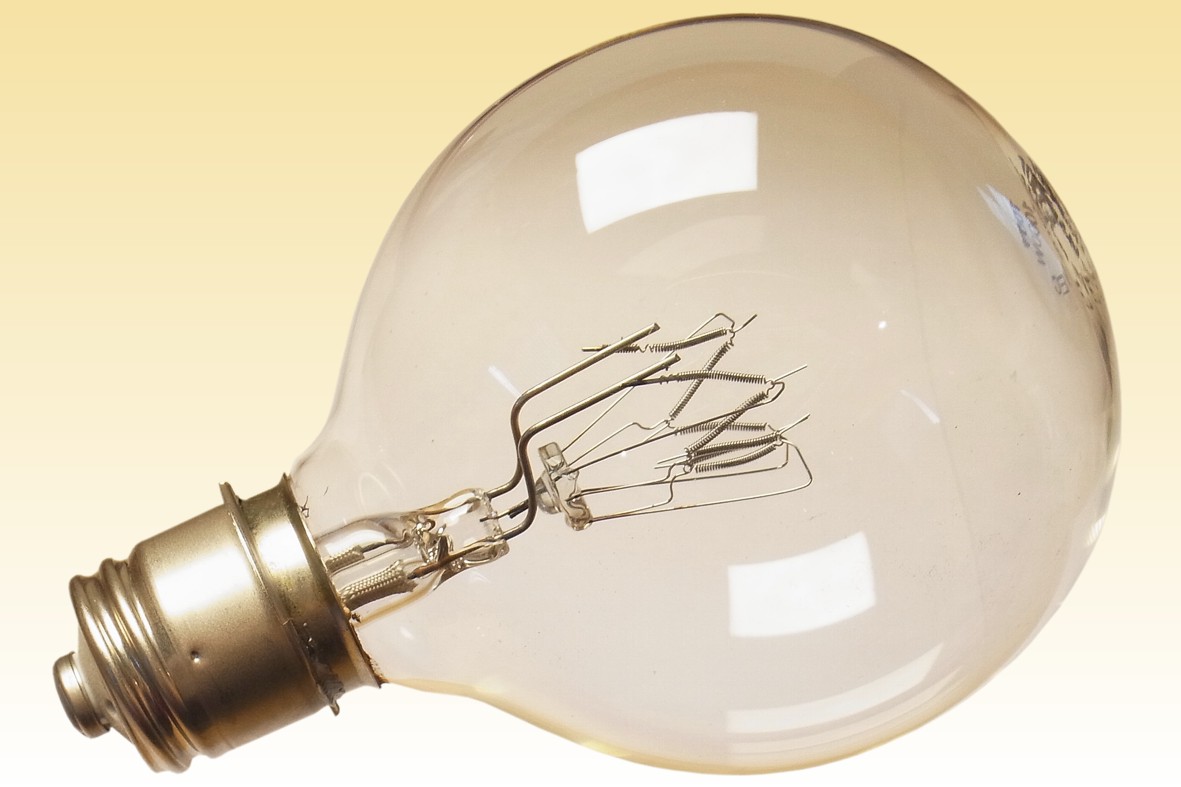
|
L/11 Bunch Filament Lighthouse Lamp |

It is designed for 100V circuits, a low voltage which used to be provided by diesel generators or batteries prior to the extension of the mains electricity grid to the remote and offshore locations of British lighthouses. The filament construction is the standard bunch design employed in Class B1 floodlighting lamps, having a semi-cylindrical shape. One drawback of this for lighthouses is the non-uniform luminous intensity distribution around the lamp axis, which may cause variations in the apparent brightness of the signal from different directions. Although this was tolerable for the lower wattage lamps having limited signalling range, higher power lamps such as the L/25 tended to make use of a double filament having a full cylindrical shape.
The filament assembly is mounted on a conventional hard glass stem, whose external leadwires are sheathed in Vidaflex sleeving to prevent accidental contact due to the variations inherent with the fully hand-made construction. It is sealed into a spherical bulb blown in borosilicate glass to withstand the high thermal loading. The cap is of the standard P40s mogul prefocus type, individually aligned to the filament centre to avoid need for refocussing the optical assembly after replacing the lamp.




| Manufacturer: | Victory Lighting | Type L/11 (EC105) |
| Lamp Power: | 1000 Watts | |
| Lamp Voltage: | 100 Volts | |
| Lamp Current: | 10.0 Amperes | |
| Cap Type: | P40s/45 | Ni plated brass & Porcelain |
| Bulb Type: | G-130 | G-41 in eighths/inch |
| Bulb Finish: | Clear | Borosilicate glass |
| Filament Type: | C-5 | Bunch |
| Filament Size: | 15mm x 20mm | |
| Atmosphere: | Argon-Nitrogen | Red phosphorus getter |
| Luminous Flux: | 18,000 Lumens | |
| Luminous Efficacy: | 18.0 Lumens per Watt | |
| Luminance: | 600 cd/cm² | |
| Colour Temperature & CRI: | CCT: 3000 Kelvin | CRI: Ra 100 |
| Chromaticity Co-ordinates: | CCx: 0.452 | CCy: 0.409 |
| Rated Lifetime: | 800 hours | |
| Burning Position: | Vertical cap down ± 30° | |
| Overall Length: | 195 mm | 711/16 inches |
| Light Centre Length: | 80±3 mm | 33/16 inches |
| Factory: | Wembley | England |
| Date of Manufacture: | July 2001 | Date Code: JG |
| Original Value: | ` | |

